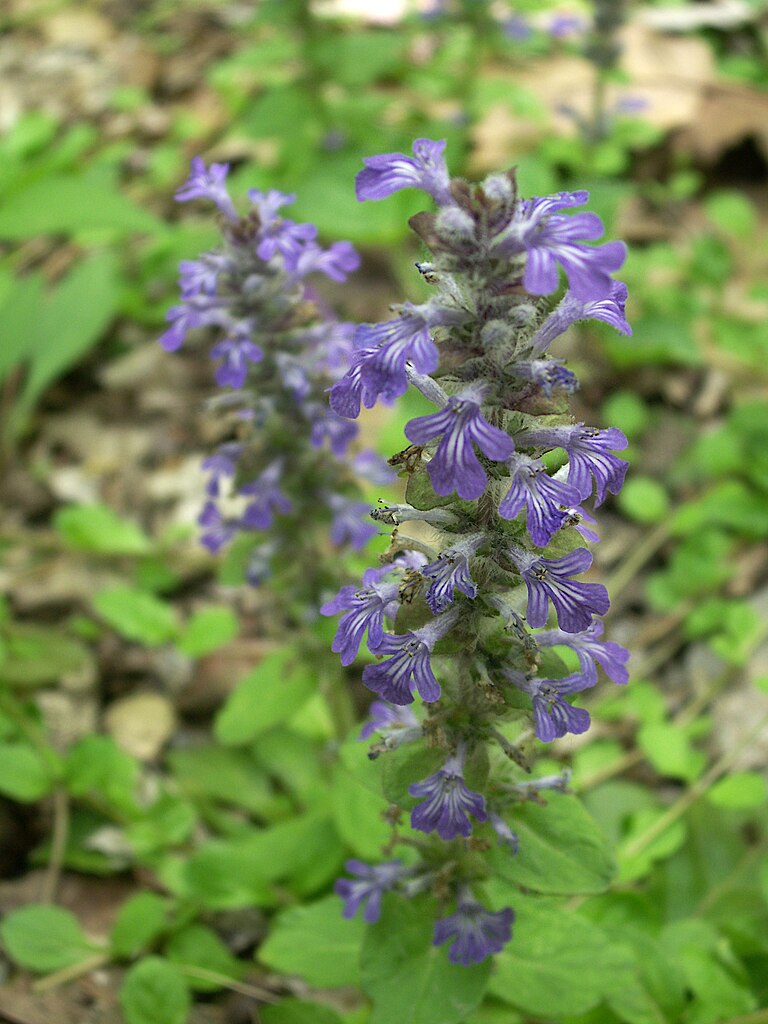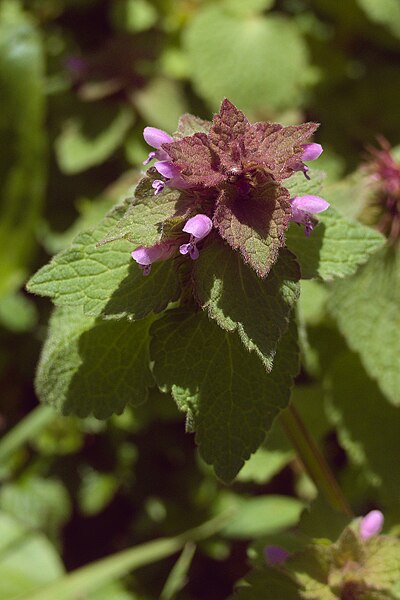
A European import prized as a groundcover, and now a thoroughly naturalized citizen of our flora. These were blooming in Bird Park, Mount Lebanon.
For a description of the species, see the Ajuga reptans reference page.

A European import prized as a groundcover, and now a thoroughly naturalized citizen of our flora. These were blooming in Bird Park, Mount Lebanon.
For a description of the species, see the Ajuga reptans reference page.

Also known as Purple Dead-Nettle, because the hairy roundish leaves reminded someone of nettles that don’t sting. This tiny flower is one of the first to appear in the spring, or even in the middle of winter if it gets a warm spell. It continues to bloom for most of the season, and it adds the very decorative touch of deep purple leaves to set off the lighter pinkish-purple flowers.

For a more thorough description, see the Lamium purpureum reference page.

Wool-covered leaves delight children and make a decorative accent all year, so these are popular garden plants. But the purple flowers produce a good crop of small seeds that wash downhill easily, so patches of Lamb’s Ears often pop up in the city where no one has planted them. These were photographed June 8 in Beechview.
For a fuller description, see the Stachys byzantina reference page.

A common weed that can be spectacularly beautiful in large masses. It infests lawns, but never grows very tall, blooms prettily, and smells like mint when you mow it.
For a longer description, see the Glechoma hederacea reference page.



These delightful little flowers give us two or more months of solid bloom from late winter through mid-spring, and in addition to the flowers they have very decorative bronze-purple upper leaves. The only thing that keeps us from noticing them is that they are everywhere. If they were rarer, they would be loved; since they are in every lawn and sidewalk crack, they are ignored.
This plant was blooming in Beechview, where it was photographed on May 5.
For a full description, see the Lamium purpureum reference page.